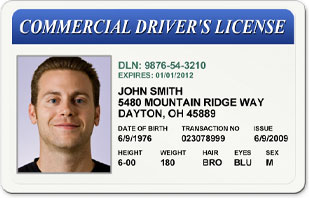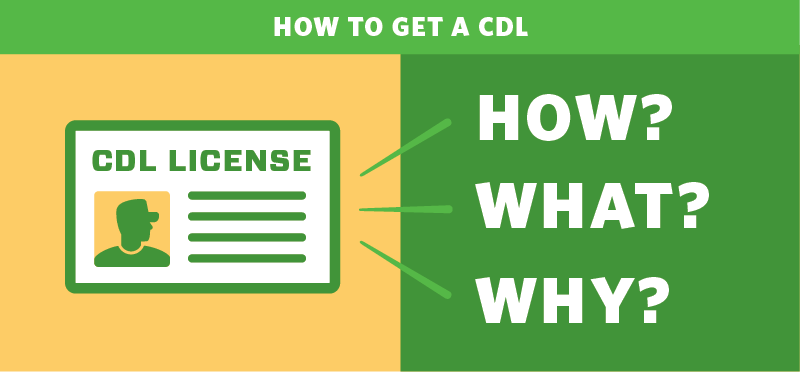The How/What/Why of Getting a CDL: Everything You Need to Know About a Commercial Driver’s License
 How to get a CDL – it’s one of the most common questions we answer at Driver Solutions. Here are the other top questions: Who needs a CDL license? Why is a CDL needed? What is CDL training? For someone considering a career as a professional truck driver, the uncertainty about how and where to begin the process of getting a CDL can be frustrating. Getting a CDL isn’t complicated when you understand the complete process.
How to get a CDL – it’s one of the most common questions we answer at Driver Solutions. Here are the other top questions: Who needs a CDL license? Why is a CDL needed? What is CDL training? For someone considering a career as a professional truck driver, the uncertainty about how and where to begin the process of getting a CDL can be frustrating. Getting a CDL isn’t complicated when you understand the complete process.
Want More? Read on for the answers to these common questions or get caught up on our entire How To Get A CDL series
Why do I need a CDL?
First, it helps to understand that “CDL” is the acronym for "commercial driver’s license" and the reasoning behind the creation of this truck driver license. In the 1970’s and 80’s, a lot of unqualified and improperly trained drivers were driving trucks and other commercial vehicles on our US highways. States had different laws, types of driver’s licenses and requirements for truck drivers. In short, it was the Wild West of trucking. Preventable accidents, many resulting in deaths, reached an all-time high. So with the Commercial Motor Vehicle Safety Act of 1986, Congress established standards and requirements for a truck driver license by creating the CDL.
The CDL has been broken down in to 3 classes – with each class related to size and weight of the vehicle:
- Class A: Any vehicle with a Gross Vehicle Weight Rating (GVWR) of 26,001 or more pounds with the vehicle being towed in excess of 10,000 pounds. Tractor trailers (semis) are Class A Vehicles.
- Class B: Any single vehicle (i.e., nothing being towed) with a GVWR of 26,001 or more pounds or a vehicle towing a vehicle not in excess of 10,000 pounds GVWR. Buses, straight trucks, and dumptrucks are all Class B vehicles.
- Class C: A single or combination vehicle that does not meet the definition of Class A or Class B but transports a) 16 or more passengers, or b) hazardous materials.
Which class of CDL needed is directly dependent on the vehicle being driven. Also, the CDL class system is graduated, meaning that a driver holding a Class A CDL is authorized to drive the smaller vehicles in the lower classes (provided he holds any other CDL endorsements.) Driver Solutions provides company sponsored training for the Class A CDL and qualifies drivers for tractor trailer trucking jobs.
What tests do I have to take to get my CDL?
Similar to obtaining a standard driver’s license, getting a CDL requires passing written exams and a driving test. For a Class A CDL, four separate tests must be passed, including:
CDL Permit Test: three written exams comprise the Class A CDL permit – general knowledge, air brakes, and combination vehicles. Each of these tests is based on the information contained in the CDL manual. A number of great resources are available to help prepare for the CDL written tests. Driver Solutions has endorsed the online CDL practice tests from eGears.
Once the written tests are completed, the next step of getting a CDL is the skills test. This test involves a pre-trip inspection, basic vehicle control and road/street driving.
CDL Skills Test
Pre-Trip Inspection: During the pre-trip inspection portion of the CDL test, a driver will be asked to identify and explain various parts of the semi truck. The pre-trip is important as all drivers must conduct one every time before beginning a trip. There are over 100 items to remember during this portion of the CDL test, so many drivers watch online pre-trip inspection videos to help them study.
Basic Vehicle Control: In the control test, drivers must demonstrate that they can conduct basic truck maneuvers including straight-line backing, offset backing, and parallel parking.
Road Driving: In the final part of the CDL skills test, drivers will demonstrate their skills on a test route with a variety of traffic situations, similar to what was required when getting a regular driver’s license. Test items include proper turns, intersections, lane changes and more.
After passing all sections of the CDL test, a driver can be issued a Class A CDL license!
What vehicles require a CDL?
Which CDL class license needed depends directly on the vehicle you’ll be driving. Vehicles such as tractor trailers (semis), buses, cement trucks, and tow trucks all require a CDL license to operate. Generally speaking, any vehicle over 26,001 pounds, any vehicle towing another under 10,000 pounds, or any vehicle that transports 16 or more passengers or hazardous materials requires a CDL of some class.
How much does it cost to get a CDL?
The cost to get a CDL depends on whether you attend truck driving school or learn on your own (no formal training). Options for truck driving school include private (you pay your own way) or company sponsored, in which a trucking company will cover the cost of training in exchange for your services as a truck driver. Private truck driving schools can range between $3,000 and $7,000. The driver must also pay any licensing or testing fees. These vary by state, but generally include:
- A fee to issue the CDL permit
- Fees for written and skills tests – depends on the state
- A fee for using the license branch or 3rd party site’s vehicle
- An issuing fee for the hard copy CDL license
How long does it take to get a CDL?
How long it takes to get a CDL is related to to the type of training chosen. Attending a compay sponsored CDL training program (link Driver Solutions’), you can expect to get a CDL in 3 to 4 weeks. Truck driving schools can be as short as a week and as long as 4 to 6 months at community colleges. A week long CDL school may not provide enough instruction while a 6-month course may not be plausible with your demands and schedule.
Having a clear focus on your goals will help you determine which class of CDL to get and how long it takes to get. Many people want to get a CDL for employment purposes. If getting a job is the reason, a training program like Driver Solutions’ offers many advantages:
- Company sponsored training - no need to get a loan or pay cash upfront
- Linked to job opportunity - trucking companies willing to cover training costs in exchange for your employment
- Earn a paycheck faster - training includes paid on-the-job training
Now that you know what it takes to get a CDL, the next step is to apply for your new truck driving job! Just click the button below to get started. Filling out an application does not commit you to anything, but will allow you to schedule a time to speak with a Driver Agent about your options.
More on How to Get a CDL
We answer everything you ever wanted to know in our special How to Get a CDL series. Just click a link below to read the complete article:
